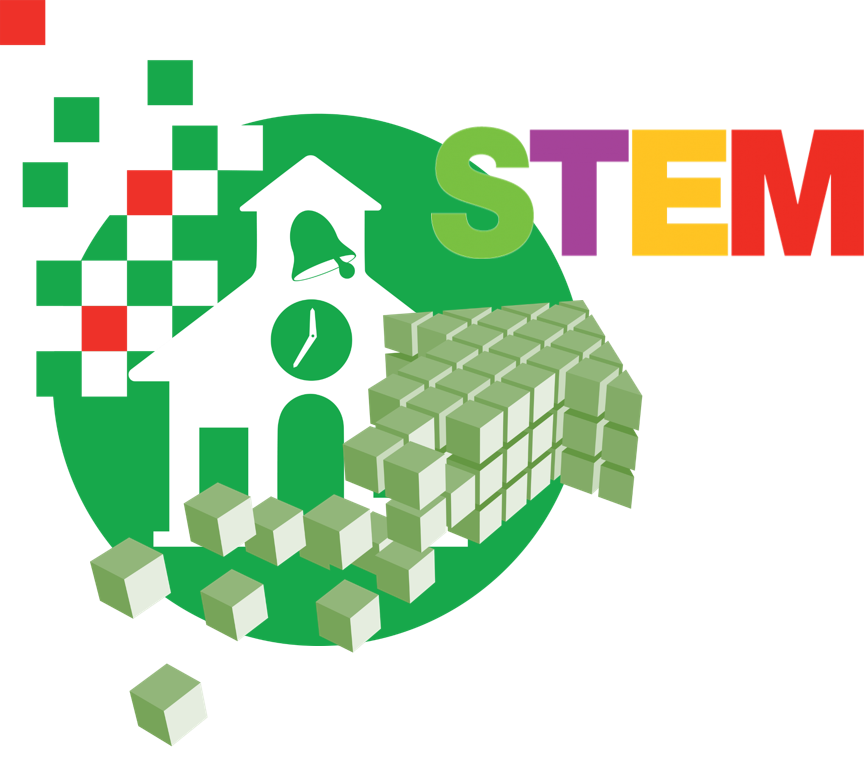We live in a technologically-advanced world that is becoming even more technical. To navigate this world, up and coming generations need a firm foundation of science, technology, engineering, and mathematics (STEM) on which to build. All children need this foundation. Unfortunately, STEM fields have been dominated by men. We need to do better. Becki Lynch, Director of US Community Partnerships at GSK, insists, “STEM education is more critical than ever for all children. It’s vital to the future of our workforce, and we need to equip all children with the tools they need to succeed in a competitive economy. STEM careers are some of the fastest-growing and highest paying and the disparity of access to these pathways for women and people of color is a pressing issue of social and economic justice.”[1]
Demetrius Harrison, a Promotions Specialist at NowSourcing, pointed out to me in an email, “Today’s high school graduates are some of the first to go through all of K-12 education with a focus on STEM.” The question is: How are they doing? Harrison directed me to an infographic (see below/click to enlarge) that asserts, “Over the last decade, the U.S. has seen nearly 2 million new STEM jobs — but students’ math and science scores continue to lag behind other nations.” According to Lynch, that’s especially true for women and people of color. She states, “In the US, we are not developing enough qualified STEM professionals we are developing are a persistently homogeneous group. Women make up only 24% of STEM workers in the nation and Hispanic and African-American representation in STEM fields is less than 40% of the representation of those groups in the US population overall.”

Source: Early Childhood Education Degrees
The importance of STEM
The infographic notes, “STEM is an ever-evolving and expanding field — success requires the ability to continue to learn and adapt to new situations.” It goes on to note, “Activities present engaging materials for hands-on learning. Project-based lessons help build soft skills, like creativity and innovation; collaboration and leadership; and problem-solving and critical thinking.” The infographic quotes Lisa Brahms, Director of Learning and Research at the Children’s Museum of Pittsburgh, who asserts, “Making [something] highlights relationships. You don’t have to know everything — you use the resources of the community.” I am a big proponent of project-based learning. Several years ago, a few colleagues and I founded The Project for STEM Competitiveness — a project-based, problem-solving approach to STEM education helping schools near where we live demonstrate to students that STEM subjects can be fun and applicable in their lives. We believe learning how to solve everyday problems will help students in every aspect of their lives by teaching them to think critically about how they can overcome challenges. Working together in group projects can help students learn soft skills as well as understanding larger social problems that need addressing.
Another real value of a project-based STEM approach is that it encourages an interdisciplinary approach to learning. Futurist Bernard Marr (@bernardmarr) notes, “Since jobs in the real-world draw upon several disciplines at once, STEM does the same with science, technology, engineering, and math. Lessons integrate all these disciplines, so it’s, therefore, more realistic to real-life applications than traditional philosophies of education that have the various subjects in silos.”[2] Frans Johansson, in his very interesting book entitled The Medici Effect: Breakthrough Insights at the Intersection of Ideas, Concepts, and Cultures, writes about the value of creating a space in which people from diverse fields of expertise can get together to exchange ideas. He named his “effect” after the Medici dynasty, a wealthy and powerful Italian family that played an important role in the Renaissance. The family’s wealth permitted it to support artists, philosophers, theologians, and scientists, whose combined intellect helped burst the historical pall known as the Dark Ages. The fact that art helped spur innovation during the Renaissance has a number of critics, including Marr, advocating for the addition of an “A” to the STEM acronym to include art (i.e., STEAM). Marr explains:
“Leonardo Da Vinci was on to something years ago when he stated, ‘Study the science of art. Study the art of science.’ … Proponents of STEAM education recognize the importance of creativity and innovation in the future to solve our problems. In fact, according to one study, nearly all Nobel laureates in the sciences practice some form of art as adults. When you compare these successful scientists with others, they are significantly more likely than other scientists to practice art in a variety of forms, from acting to singing, writing poetry to woodworking, and more. It’s this science success and art connection that make STEAM proponents believe that by integrating arts to a child’s education, it creates a person more ready to meet the ingenuity demands of our economy.“
There has always been a close relationship between technology and design, which is why so much technology looks like art. The better the design, the more useful the technology. Talia Milgrom-Elcott (@Talia100K), CEO of 100Kin10, predicts, “2020 will be the year when technology officially transcends the smart board and educators understand that we need to approach its use comprehensively.”[3] The staff at the Smithsonian Science Education Center points out, “Four billion people on the planet use a mobile phone, while 3.5 billion people use a toothbrush. In the past two years, 90% of all of the world’s data has been generated. NASA plans to set foot on Mars in the next 20 years, and driverless cars are already being tested in Europe. The future is here, and it requires a citizenry fluent in science, technology, engineering, and math.”[4]
Concluding thoughts
According to the staff at the Smithsonian Science Education Center, “78% of high school graduates don’t meet benchmark readiness for one or more college courses in mathematics, science, reading, or English.” Milgram-Elcott hopes the potentially devastating consequences of climate change will inspire rising generations to get more involved in STEM/STEAM programs. She writes, “We hope that 2020 is the year that climate leads the way in showing that personally- and career-relevant learning in K-12 can energize learning for all kids, from all backgrounds, in STEM. Our planet just might hang in the balance.” Alex Edwards and Quincy Preston add, “Since STEM was coined, it’s been a movement built on fundamentally shifting the way we think about education. STEM — Science, Technology, Engineering, Math — and its variations, STEAM (with its ‘A’ for Art) and STREAM (with its ‘R’ for Reading and wRiting), have their differences and their advocates. Whatever your stance on the acronyms — STEM, STEAM, and STREAM — education is essential for building a foundation for a robust, high-tech workforce. It’s an umbrella concept, with each entity working together. And, it can have a significant impact on the workforce, fueling the future of the talent pipeline.”[5]
Footnotes
[1] Jennifer Kite-Powell, “STEM And STEAM Education: Why We Need Them,” Forbes, 28 August 2019.
[2] Bernard Marr, “We Need STEAM, Not STEM Education, To Prepare Our Kids For The 4th Industrial Revolution,” Forbes, 15 January 2020.
[3] Talia Milgrom-Elcott, “Four Things You Need To Know About STEM And Education For 2020,” Forbes, 13 January 2020.
[4] Staff, “The STEM Imperative,” Smithsonian Science Education Center.
[5] Alex Edwards and Quincy Preston, “STEM, STEAM, STREAM: ‘The World Doesn’t Work Without Technology Anymore, Nothing Does.’,” Dallas Innovates, 11 October 2019.





